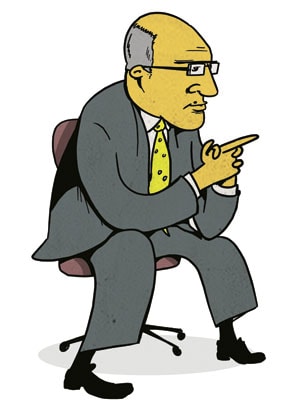
Subroto Bagchi: In Search of the Zen Moment
The writer of the popular Zen Garden on the process behind the moments of enlightenment
Forbes India was in the womb for a long time. The procedural delays in its arrival actually helped IG and Charles to convert their frustration into an opportunity: To, unhurriedly, ideate and plan and collaborate with me to conceptualise the Zen Garden. A lot of the column’s subsequent success goes back to the pre-natal attention it got.
Zen Garden was based on three premises. First, entrepreneurs are valuable people who often carry deep insights that can spark others. Second, these people are sometimes solitary individuals; they need the right probes and there are even times that they do not know what they know. The third premise was that if we bring in an entrepreneur to talk to an entrepreneur, these great men and women feel secure enough to explore the deeps and bring out valuable insights.
There are three most frequently asked questions about the column. How do you choose the people you interview? How do you know what to ask? And, finally, how do you find the time?
When we conceptualised Zen Garden, we thought of inclusion before we thought of exclusion. We told ourselves that it should evenly represent different sectors, regions and demographic profiles. That is how, if you notice, the column has carried stories of people from all parts of India, from different industries and business segments, and of course it covers both men and women, as well as for-profit and not-for-profit.
We generally avoid people who are on the cover page anyway, because not many would-be entrepreneurs can relate to them. So, the less the limelight and the more usable the wisdom, the better the chance of being in the Garden. That said, we also decided that a couple of times in a year, we must seek entrepreneurial knowledge from unusual sources. That is how the Dalai Lama was featured as CEO of the Soul. Him aside, we seek out other interesting people, sometimes well-known and respected like V. G. Siddhartha and Anu Aga, sometimes completely unknown, like Sanghamitra Jena and Anita Shah. Who I interview is planned months in advance. The Forbes India team and I agree on the guest list based on the learning potential for our readers, and we take into account the level of media exposure. We want to be very sure that the person has respectability beyond just material success.
Once we know who is coming, I prepare for every meeting. I research the individual; sometimes imagine page layout itself, or the questions and the hook. But when I sit across from them I suspend everything, because I do not want my visitor to feel that he or she is facing a journalist.
During the time I’m with the person, I am a fellow entrepreneur, awed, fascinated, eager to hear their tale of the journey, just the way the column describes it. I am part-sculptor of words, part-photographer.
When you are fascinated with people, they allow you into their innermost recesses and they show you their wellspring. People who have come to Zen Garden are not looking for branding themselves. So, usually I find myself across from an emotionally secure individual and all I have to do is to ask them to begin from the beginning. But the difference is in the subsequent engagement. I stop them to ask questions, sometimes I offer my own point of view, sometimes I show them something they did not see in their own journey and ask them to reflect.
Sometimes, I must surprise my visitor so that he or she gives me the gem I am looking for. Usually, that surprise is a question no one has ever asked before.
When I met the Dalai Lama, I asked him: What would the Buddha have to say to modern day business if he were here today?
He listened intently and then he had a profound answer: I do not know. Then he burst in to a hearty laughter, subsided and started gushing like a mountain spring.
All I needed to do was to listen.
There are times when, in search of the Zen, I bring back a mountain and not the herb. For days and months it simply sits on my desk and I sheaf through transcripts that my colleague at work, Shanti, makes for me, and wallow in the other pages of information that I might have collected.
From a maze of information, my visitors let me sculpt their story, and then I hold aloft something readers would love to behold and admire and learn from. Memorability is a key requirement for that process of learning. Hence, in every journey, I look for a story that serves as a hook. But the story is not the thing; it is the one or two pithy points of self-realisation that stay in the mind. That is where the sculptor stops and the photographer of words takes over. A photographer must know the object, the exact angle and lighting, and in a fleeting moment pick the one that is of essence, one that must be brought into sharp focus.
(This story appears in the 30 November, -0001 issue of Forbes India. To visit our Archives, click here.)





